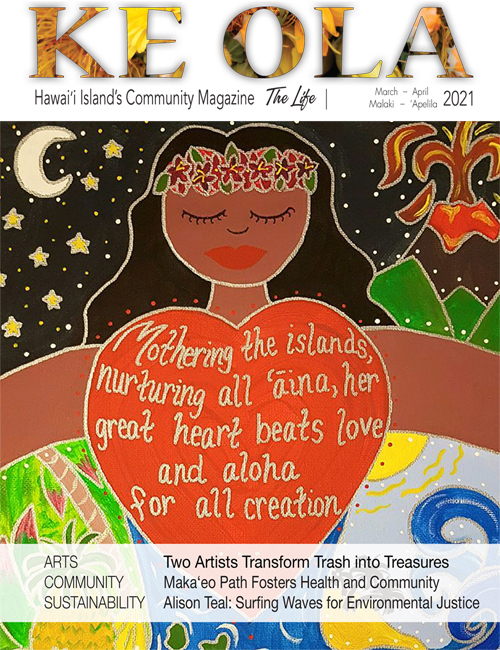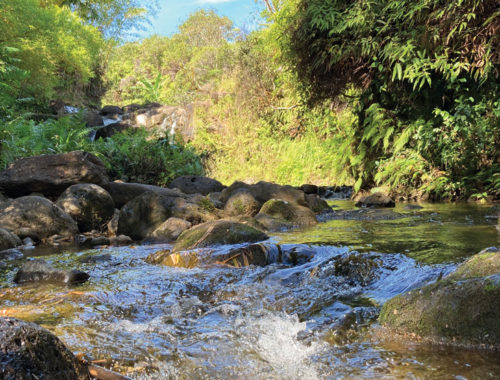Managing with Aloha: Key 8—Sense of Place
Series 3 on Managing with Aloha, Bringing Hawai‘i’s Universal Values to the Art of Business. Ninth in Series Three on Managing with Aloha
By Rosa Say
Though listed as Key 8 in Managing with Aloha’s 9 Key Concepts, Sense of Place is where the common-sense functionality of the philosophy really begins. Making the connection to Sense of Place gives every business the opportunity to discover their Aloha abundance, and hence, their relevance to a place.
Think “working in my neighborhood,” no matter how large or small your locale might be, for no culture exists in a vacuum.
Sense of Place is both the feel OF a place, and the feel FOR a place. Sense of Place is about greater community locally and connectivity globally. It is saying a resounding “thank you” with germane stewardship, and engaging at a higher level with those places which have gotten you this far, and continue to nourish you daily in a multitude of tiny ways that collectively are absolutely huge factors in your success. It is giving back, recognizing that place nurtures and sustains us. Place awakens our awareness, shapes our experiences and lends cultural richness to life. Always will.
Place-making is basic in Business 101. Even today, a time during which the global COVID-19 pandemic has obliterated previous objection to remote work, making it happen instead, place determines much in regard to whether or not a business is pertinent or wanted. Are you local? Statewide? National? Global? How so? Beyond your relevance and desire to serve, how are you actively, meaningfully connected?
In a comprehensive business plan, those questions get asked on three fronts: For marketing—in regard to your customers; for recruitment and employment—in regard to your staff; for community acceptance, partnership and support—in regard to the people and businesses within the community hosting you. As a classic business analogy reminds us, all three “legs of the stool” are necessary for a business to stand, flourish, and prosper.
Our public health crisis this past year also ignited several conversations about what, and who, is essential, secondary, or even less so. As a fellow coach put it when we compared notes, “The humility called for in these times has been an exceptionally good teacher.” We better understand how physicality is important to our business models, and how remote, physically distanced working possibilities may not suffice—ask any restauranteur or small business owner how their Sense of Place ramifications have suddenly bubbled to the surface of their business plan adjustments, or their very existence.
In some ways, the pandemic has been good for customer service. Many have shortened their automated answering systems, or gotten rid of them altogether so they can personally talk to every potential customer. Contactless payment has benefitted public hygiene and forced technology improvements. Delivery systems have been improved, and I suspect curbside pick-up will be a necessary offering in larger brick-and-mortar retail forevermore. Every example I can think of has some connection to a business’s place-making relevance where they choose to operate.
Sense of Place is key, in that it also addresses the implicit and explicit promises a business makes. When a business rises in prominence within a community, it creates certain expectations, and may even tout those expectations as branding—it makes promises about what it stands for, and intends to deliver.
‘Explicit’ means something that is stated plainly, while ‘implicit’ refers to something that is implied and not stated directly. Consider an ice-cream vendor. Every flavor on their menu is an explicit promise to offer and deliver it. Among their implicit promises, is that their wares are frozen and not half-melted, and that a flavor will taste the same each and every day they offer it. If Hawai‘i is that ice-cream vendor’s sense of place, they’ll be sure to offer Kona Coffee ice cream, pineapple or lilikoi sherbet, macadamia nuts as a topping, and shave ice with azuki beans is a very likely possibility as well!
Every place has history, tradition and heritage as part of its “storied past” and as potential for creating a better future—exactly what the vision and mission of a business must be all about, for that storied past is not just in memory and nostalgia, but as connected to fit, expectation and comfort. Future-forward, it’s about progress, growth expectations and a palpable excitement, so that place will continue to thrive in desirability.
Every business—and every workplace, whether physical or manifest in culture, can represent a unique opportunity to create a special place. When you think, “working in my neighborhood” or, “working for my community” with a feel FOR, and OF your place, what importance do you think about? What are the promises you are making by merit of your very existence, both implicit and explicit?
In other words, what is your sense of place, and how do you honor it? Sense of place may be your business advantage more than ever before.
In Series 3, we explore the 9 Key Concepts of Managing with Aloha as a culture-building philosophy for the workplace. Next issue, we’ll talk about Key Concept 9: Palena ‘ole.
Contact writer Rosa Say at RosaSay.com or ManagingWithAloha.com



